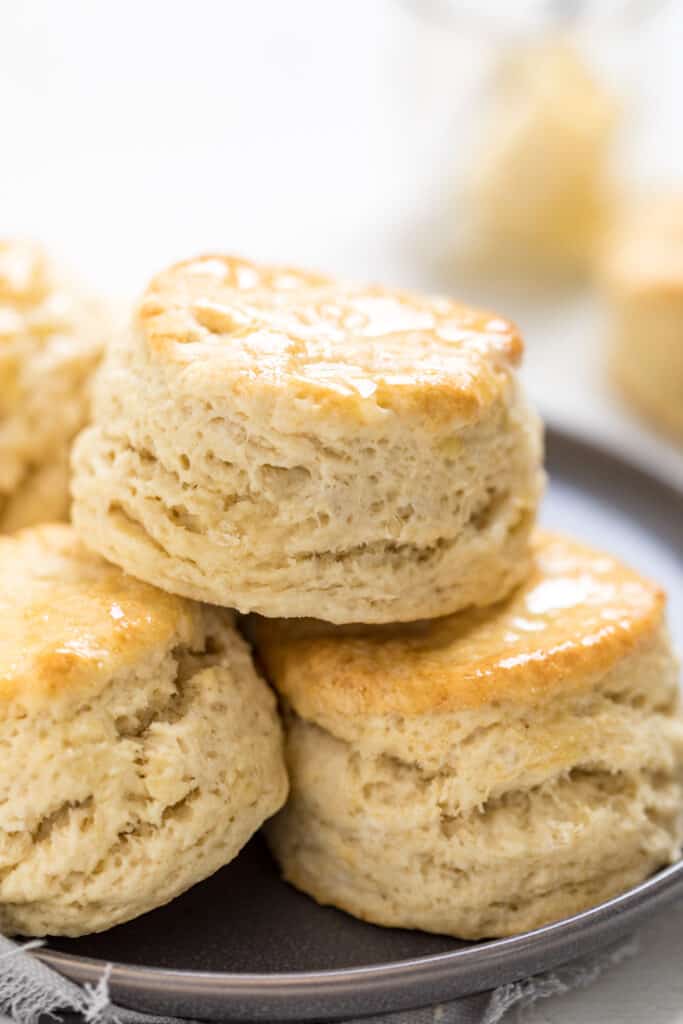Egg-Free Biscuit Delights for Your Little Ones
Hello there, wonderful parents! If you’ve been on the lookout for delicious biscuit recipes that cater to egg allergies or just prefer to go egg-free, you’ve hopped to the right spot! Egg allergies in children can be quite common, and as devoted guardians of their smiles and tummies, you’re probably on a mission to find treats that are both secure and scrumptious. So, let’s jump into the world of egg-free biscuits that promise to fill your home with joy and your cookie jars with safe, mouth-watering goodies.
Why Go for Egg-Free Biscuits?
Choosing egg-free biscuits isn’t just for those dealing with allergies. It’s also great for vegan families, eco-conscious eaters, or anyone interested in exploring variety in their baking. Whatever your reason, know that the realm of eggless baking is rich with possibilities and you’re about to become a wizard in crafting magic that comes right out of your oven!
Understanding Egg’s Role in Biscuits
Before we dive into recipes, let’s understand the role eggs usually play in baking. Eggs act as binders, add moisture, and can help with leavening. But fear not! There are countless alternative ingredients that can substitute for eggs and still produce that perfect crunch and flavor we all adore in biscuits.
Must-Have Ingredients for Egg-Free Biscuit Baking
Before you start mixing and rolling out dough, let’s stock up your pantry with some egg-free essentials:
- Bananas: These are fantastic as a binder and add a hint of sweetness.
- Applesauce: Great for moisture and works wonderfully in recipes that call for a subtle fruit flavor.
- Flaxseeds or Chia Seeds: When mixed with water, these seeds create a gel-like substance that can mimic the binding properties of eggs.
- Silken Tofu: A neutral-flavored binder that’s perfect for denser biscuits.
- Vinegar and Baking Soda: Combined, these create a leavening effect that gives your biscuits a nice lift.
- Yogurt or Buttermilk: If you’re not dairy-free, these can add moisture and a bit of tanginess to your biscuits.
- Commercial Egg Replacers: These are readily available in most supermarkets and can be used as directed on the packaging.
Now that your kitchen is stocked, we can start thinking about flavors and textures that will make your biscuits unforgettable. Whether you’re craving chocolate chip, spicy ginger snaps, or classic shortbread, there’s an egg-free version waiting to be baked.
A Plan for Perfect Egg-Free Biscuits
Before beginning any recipe, it’s important to have a game plan. Here’s how you can organize your biscuit baking adventure:
- Read the Recipe: Understand the steps you’ll need to take before you begin.
- Prepare Ingredients: Measure everything out to make the process smooth and enjoyable.
- Oven Ready: Preheat your oven to the right temperature for a warm welcome for your biscuit dough.
- Timing is Key: Keep an eye on the clock. Egg-free biscuits may have slightly different baking times.
Now that we have the preliminaries out of the way, it’s time to get our hands floury! As you read on, you’ll find an array of recipes that cater to various tastes and complexities. From here on, the fragrant journey of baking begins. So, roll up your sleeves and let’s make some fantastic egg-free biscuits that will have your kids grinning from ear to ear!
Whether it’s the classic chocolate chip cookie without the egg or an adventurous oatmeal and raisin concoction, you’re about to become the hero of egg-free baking in your own home. Keep on reading for detailed recipes, tips, and more to make your kitchen endeavors a delightful success.

5 Essential Tips for Perfect Egg-Free Biscuits
Before you begin your blissful biscuit baking mission, here are five key things to keep in mind:
1. Know Your Egg Replacements
Not all egg replacements are created equal. Some work best for moisture, others for binding. It’s crucial to understand which substitutes will work best for the texture and type of biscuit you’re aiming to create. For example, bananas and applesauce might lend a bit of their flavor to the final product, while commercial egg replacers tend to be flavor-neutral.
2. Embrace Experimentation
Baking is a science, but when you’re going egg-free, it can sometimes feel more like an art. Don’t be afraid to experiment with different combinations of egg-free substitutes to find the one that gives you the results you love. It may take a few trials, but every test batch is a step closer to perfection.
3. Mind the Sweetness and Flavor
Some egg substitutes can affect the sweetness and flavor of your biscuits. Adjust the quantity of sugar in your recipe if you’re using a sweeter egg replacement like bananas or applesauce. Similarly, be mindful of how the substitute might alter the overall flavor of your biscuits.
4. Adjusting for Texture and Dryness
Egg-free biscuits can sometimes turn out a bit different in texture. You may need to tweak the amount of other wet and dry ingredients to get that classic biscuit crumb. Be open to making small adjustments, such as adding a touch more liquid or flour, to achieve the texture you desire.
5. Patience and Precision
Egg-free baking requires patience and precision. It’s important to measure your ingredients accurately and follow the recipe closely, especially when you’re trying it out for the first time. Sticking to the script will help ensure that your baked goods turn out just right.
Enjoy the process, have fun with the little ones if they’re helping out, and know that each batch of biscuits is a labor of love that’s sure to bring smiles and warmth to your family’s hearts and bellies.
Egg-Free Biscuit Recipe: Classic Egg-Free Shortbread
Let’s start with a simple, yet beloved classic: the egg-free shortbread biscuit. Shortbread is a perfect starting point for those new to egg-free baking. It’s simple, calls for minimal ingredients, and is absolutely delicious.
Ingredients:
- 1 cup (2 sticks) unsalted butter, softened
- 1/2 cup powdered sugar
- 2 cups all-purpose flour
- 1/4 cup cornstarch
- 1/4 teaspoon salt
- 1 teaspoon vanilla extract (optional)
Instructions:
- Preheat your oven to 350°F (175°C).
- In a large mixing bowl, cream the softened butter with the powdered sugar until light and fluffy. If desired, mix in the vanilla extract.
- In a separate bowl, whisk together the all-purpose flour, cornstarch, and salt.
- Gradually add the dry ingredients to the butter mixture, mixing until a dough forms.
- Turn the dough onto a floured surface and gently knead it together. Press into a flat disc and wrap in plastic wrap. Chill in the refrigerator for about 30 minutes.
- Roll out the dough to about 1/4 inch thickness, and use a biscuit cutter to cut into shapes.
- Place the biscuits on a baking sheet lined with parchment paper.
- Bake in the preheated oven for 12-15 minutes, or until the edges are lightly golden.
- Allow the biscuits to cool on the baking sheet for a few minutes before transferring them to a wire rack to cool completely.
Now that you’re armed with key tips and a classic recipe, feel free to explore the diverse world of egg-free biscuits. Remember, each biscuit is not just a treat but an expression of your creativity and care. Happy baking, dear parents!
See more great Things to Do with Kids in New Zealand here. For more information see here
Disclaimer
The articles available via our website provide general information only and we strongly urge readers to exercise caution and conduct their own thorough research and fact-checking. The information presented should not be taken as absolute truth, and, to the maximum extent permitted by law, we will not be held liable for any inaccuracies or errors in the content. It is essential for individuals to independently verify and validate the information before making any decisions or taking any actions based on the articles.




